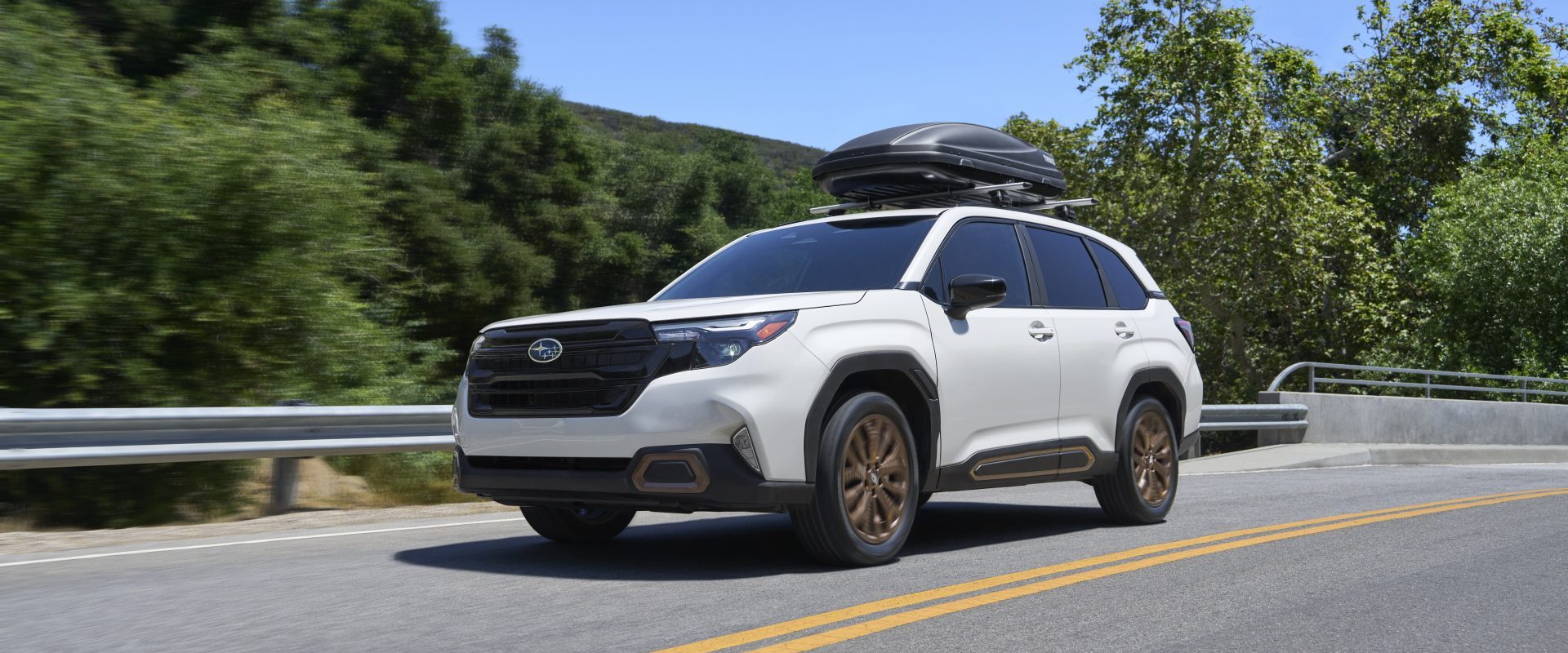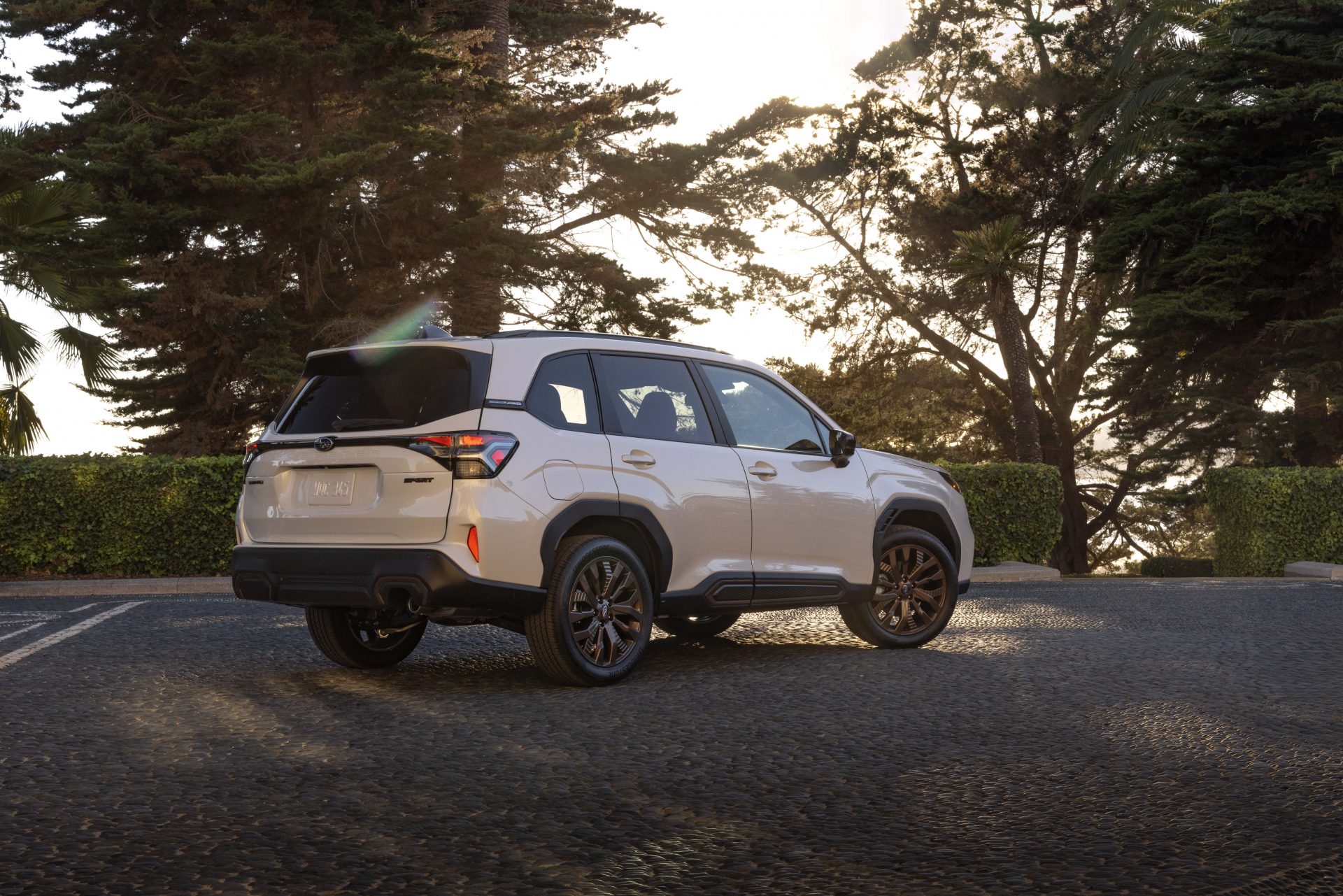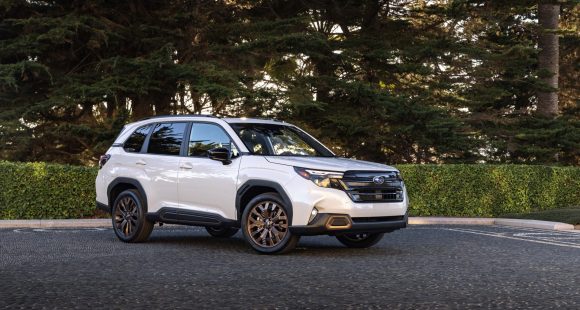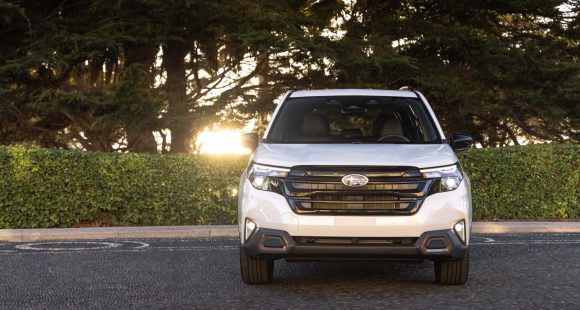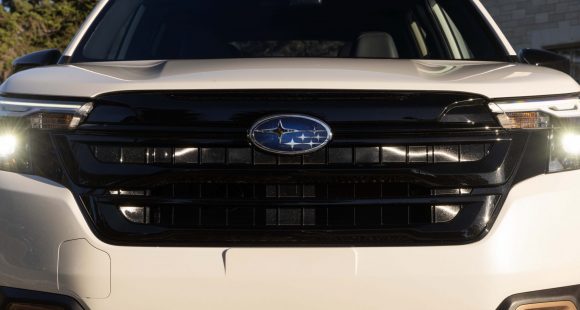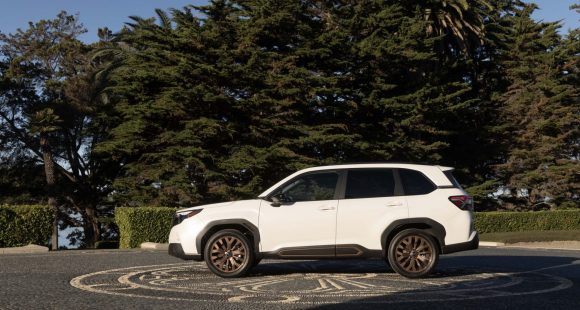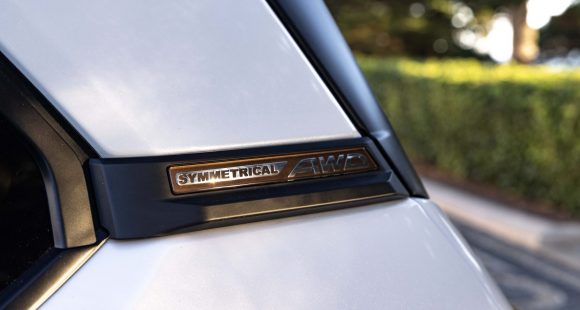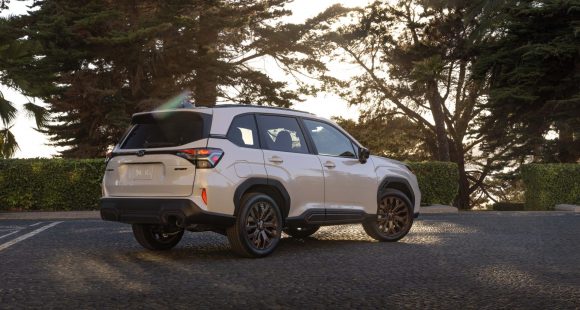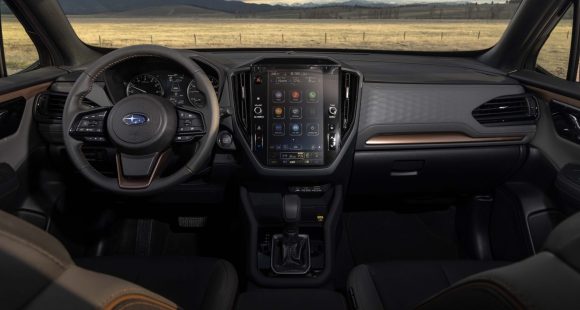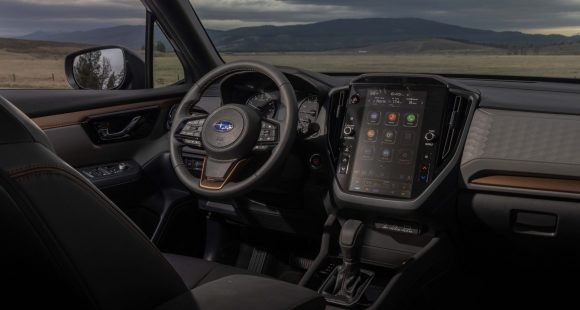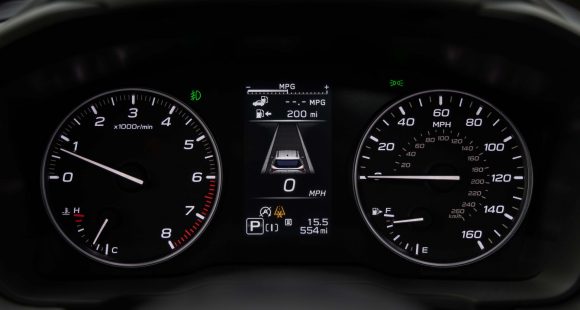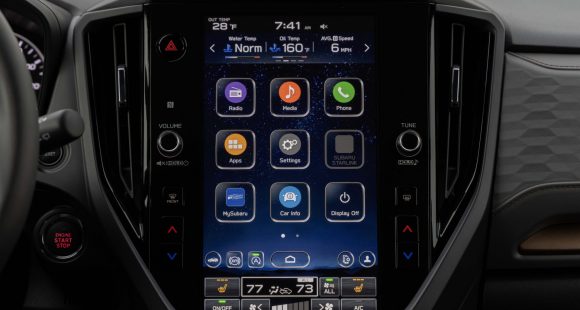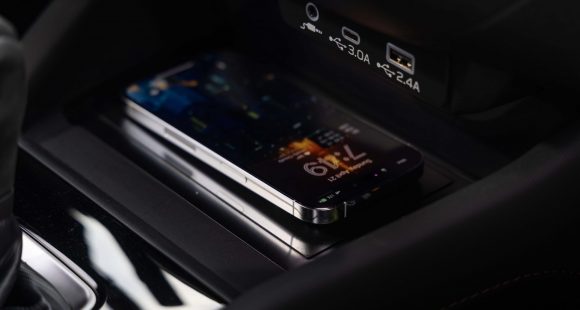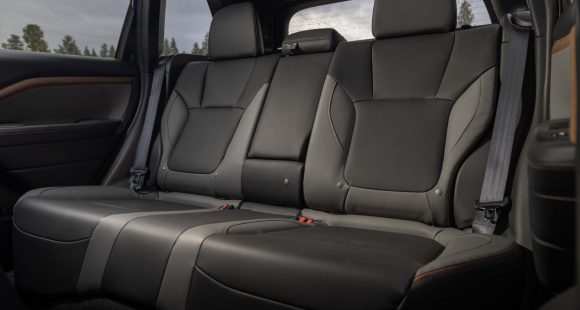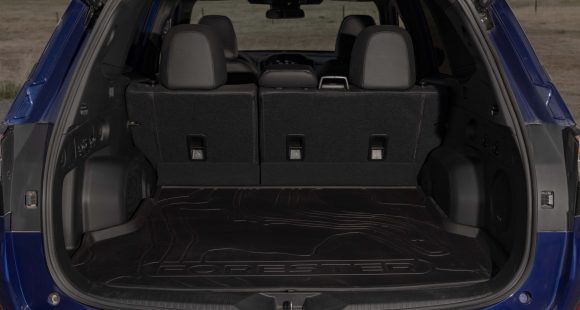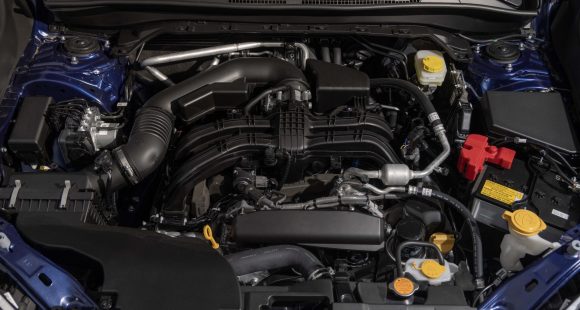2025 Subaru Forester
Funky Forester Continues Its March Towards Mainstream
More than any other brand, Subaru is responsible for making all-wheel drive a must-have feature in just about every automotive segment. They have also applied that go-anywhere adventure mentality succesfful to all of their own mainstream models. That includes the always popular Forester crossover of course, which is now kicking off its 6th generation.
The Subaru Forester arrived in the late 1990s when Subaru rightly realized that if they put a more SUV-like body on their capable Impreza platform, they’d be in prime position to cash in on the then new compact crossover craze. That segment has really exploded since then, and still continues to grow; and this all-new 2025 Subaru Forester is ready to make the most of it.
What used to be an outlier with its boxy wagon shape, now looks akin to about every other compact crossover on the road. Subaru considers its updated design for ’25 sleek and contemporary. Granted, but also less unique. The grille is much larger, expanding horizontally to now integrate the headlights into more of a shield shape, and fenders are a little more exaggerated than before.
Our mid-level Forester Sport wears sculpted 19-inch Bronze-finished alloy wheels, low profile roof rails, and black trim. Dimensions remain about the same as last gen, although it looks larger.
The interior is, on the whole, more familiar than different. Screen domination is up of course, with a portrait-style Starlink touchscreen now measuring 11.6-inches. It’s an option to replace the standard setup that uses 2 smaller screens, but both give enough information to eliminate the previous separate display that used to reside on top of the dash.
It’s good to see Subaru hallmarks like the chunky shifter, and durable materials with carefully applied textured finishes, designed to hide wear and tear are here.
Visibility is excellent as always, and the front seats have gotten noticeably more comfortable, despite a new slimmed-down appearance. Rear seat experience is mostly the same as before, which is good as they recline and fold easily, and there’s adult-size space, which is not something every compact utility can boast.
It’s good to see Subaru hallmarks like the chunky shifter and durable materials.
Cargo space is also closer to many midsize utilities at 29.6 cubic-ft., expanding to 74.4 with the seatbacks folded; all accessed through an available power liftgate that now has sensors to open with the swipe of a foot near the bumper.
Subaru keeps EyeSight driver assistance standard; Sport adds Lane Departure Warning and Automatic Emergency Steering to it.
Subaru claims the Forester’s revised chassis is 10% stiffer than before; our “seat of the pants” meter couldn’t verify that exact number but could detect a movement in that direction.
Both on the street where ride quality itself is quite substantial feeling, and at the test track…
…where it felt well-planted, despite some body roll and higher than typical ground clearance. All-wheel-drive is of course standard, and grip was as sure-footed as always through the cones, aided by the more performance-oriented tires on the Sport’s 19-inch wheels. Steering is accurate, but also typically, without much feel or feedback.
Powering the Forester is the same 2.5-liter naturally aspirated flat-4, but it has been updated. In the process, it actually loses 2-horsepower, down to 180, but torque is up slightly to 178 lb-ft., and revised tuning delivers max torque at a much lower RPM. That certainly didn’t manifest itself by being in a particular hurry to get off the line, but Subaru’s Lineartronic CVT remains a bit of a damper not necessarily a performance enhancer.
Still, our 8.2-second trip to 60 was almost half a second quicker than last gen. Here in the Sport, you can work through the CVT’s 8-simulated gears, but we found it best to just let it do its thing, while we relaxed for the 16.3-seconds that it took to complete the ¼-mile at 90 miles-per-hour.
Strong braking feel with consistently short results. Panic stops averaged 105-ft from 60 miles per hour.
Government Fuel Economy Ratings for Sport trim are 25-City, 32-Highway, and 28-Combined. We tallied 27.2 miles-per-gallon of Regular.
That’s a better than average Energy Impact Score of 10.6-barrels of annual oil use, with 5.2-tons of CO2 emissions.
The Forester follows the same basic trim path of most Subarus: Base, Premium, Sport, Limited, and Touring; ranging from the Base’s starting price of $31,115 to Touring’s $41,415.
You might say the original Forester was the right design at the right time, as it quickly became one of Subaru’s best-selling vehicles, and has remained so over the last 25 years. The 2025 Subaru Forester is a new effort that really doesn’t feel all that new, just better. After our test, a lot of things tell us that’s exactly the way Subaru buyers want it to be.
Specifications
As Tested
- Engine: 2.5-liter flat-4
- Transmission: Lineartronic CVT
- Horsepower: 180
- Torque: 178 lb-ft.
- EPA: 25 City | 32 Highway | 28 Combined
- 0-60 mph: 8.2 seconds
- 1/4 Mile: 16.3 seconds at 90 mph
- Braking, 60-0 (avg): 105 feet
- MW Fuel Economy: 27.2 mpg (Regular)




